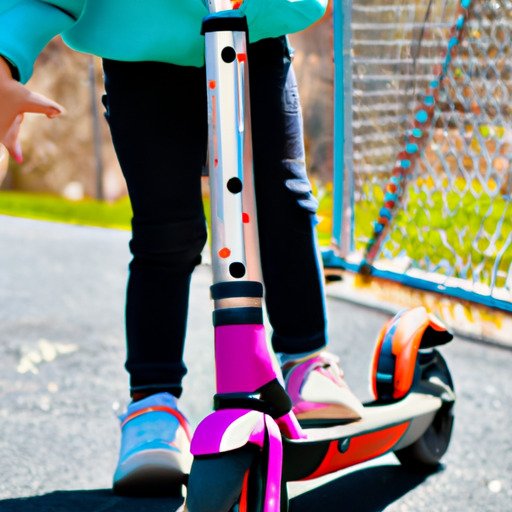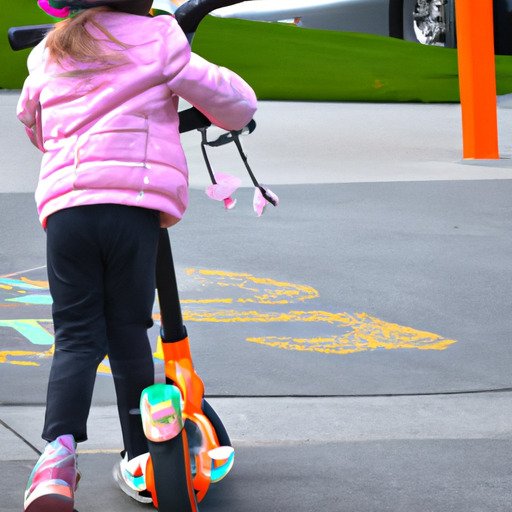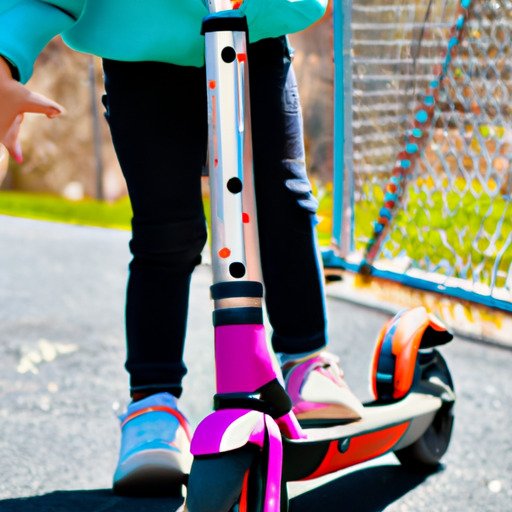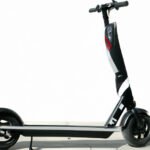
Have you ever wondered what would happen if a child gets caught on an electric scooter? It’s an important question to ask, especially if you have a child who loves to ride scooters. Electric scooters can be a great mode of transportation for kids, but they also come with certain risks. In this article, we’ll explore the possible dangers that could occur if a child gets caught on an electric scooter and provide tips on how to keep them safe while riding. Whether you’re a parent or a concerned caretaker, this article will give you valuable information to ensure the well-being of the child in your life. So, let’s dive right in and get all the facts! Electric scooters have become increasingly popular among children as a fun and convenient mode of transportation. While these scooters can provide a sense of independence and mobility, it is important for both children and their parents to understand the potential risks and implications associated with their use. In this article, we will explore the possible injuries that a child may sustain while riding an electric scooter, the legal implications that may arise, the safety precautions that should be taken, as well as alternative transportation options. By educating ourselves and our children about these matters, we can ensure a safer and more enjoyable experience with electric scooters.

Possible injuries to the child
Fractures
One of the most common injuries that a child may sustain while riding an electric scooter is a fracture. This can occur when a child falls off the scooter and lands on their outstretched hand or arm, resulting in a broken bone. Fractures can range from minor hairline cracks to more severe breaks that require medical intervention such as casting or even surgical repair. It is vital for children to understand the importance of proper balance and control while riding to minimize the risk of fractures.
Sprains and strains
In addition to fractures, children riding electric scooters may also experience sprains and strains. This can happen when a child twists their ankle or knee while attempting a sharp turn or maneuver. Sprains involve the stretching or tearing of ligaments, while strains refer to the stretching or tearing of muscles or tendons. These injuries can cause pain, swelling, and limited mobility. To prevent sprains and strains, children should be taught to ride at a controlled speed and avoid sudden and jerky movements.
Bruises and abrasions
Bruises and abrasions are also common injuries that a child may sustain while riding an electric scooter. Bruising occurs when blood vessels near the surface of the skin rupture, causing discoloration, while abrasions refer to scrapes and cuts on the skin’s surface. These injuries can occur when a child falls off the scooter or collides with an object. Wearing protective gear such as helmets, knee pads, and elbow pads can help minimize the severity of bruises and abrasions.
Possible injuries to other people
Collisions with pedestrians
It is not only the child riding the scooter who is at risk of injury; pedestrians are also susceptible to accidents caused by electric scooters. Children riding at high speeds or without proper control may collide with pedestrians, potentially causing injuries ranging from minor bruises to more severe trauma. As part of educating children about responsible scooter use, it is crucial to emphasize the importance of being aware of pedestrians and practicing caution when sharing sidewalks or other public spaces.
Collisions with other vehicles
Another potential risk associated with electric scooters is the possibility of colliding with other vehicles. Children may find themselves in situations where they are sharing the road with cars, bicycles, or motorcycles. In these instances, it is imperative that children understand and adhere to traffic laws and regulations to ensure their safety. Encouraging children to stay in designated bike lanes when available and to yield to other vehicles can help prevent accidents and injuries.
Tripping over discarded scooters
Lastly, children may also face the risk of injury due to discarded scooters left in public spaces. This can occur when a child trips or falls over a scooter that has been irresponsibly discarded by another rider. To mitigate this risk, it is essential to educate children about the importance of parking and securing their scooters in designated areas, away from walkways and common areas where others may be at risk of tripping or falling.
Legal implications for the child
Age restrictions for electric scooters
Different countries and jurisdictions have varying age restrictions for riding electric scooters. It is crucial for parents to familiarize themselves with the specific laws and regulations in their area to ensure that their child meets the minimum age requirement before riding an electric scooter. Violating age restrictions can have legal consequences and may result in fines or other penalties.
Traffic laws and regulations
Just like any other vehicle, electric scooters are subject to traffic laws and regulations. It is important for children to understand and abide by these laws to prevent accidents and avoid legal trouble. Teaching children about traffic signs, signals, and right-of-way rules can help ensure their safety and prevent potential legal issues.
Liability for damages and injuries
In the event of an accident involving an electric scooter, there may be legal implications for both the child riding the scooter and other parties involved. Depending on the circumstances, liability for damages and injuries could fall on the scooter rider, the parent or guardian, or even the manufacturer of the scooter. It is vital for parents to understand their legal responsibilities and to ensure that their child is properly educated and supervised while using an electric scooter.

Safety precautions for children riding electric scooters
Wearing appropriate safety gear
One of the most effective ways to reduce the risk of injuries while riding an electric scooter is to wear appropriate safety gear. This includes helmets, knee pads, elbow pads, and wrist guards. These protective accessories can significantly mitigate the impact of falls and collisions, minimizing the severity of injuries.
Understanding scooter controls and speed limits
Children should be fully aware of how to operate their electric scooters, including understanding the purpose and functionality of all controls, such as acceleration and braking mechanisms. It is essential to teach children about speed limits and encourage them to ride within safe and manageable speeds. This can help prevent accidents caused by loss of control or excessive speed.
Avoiding risky maneuvers
Children should be educated about the potential dangers of engaging in risky maneuvers while riding electric scooters. This includes avoiding sharp turns at high speeds, jumping over obstacles, or performing tricks beyond their capability. Encouraging responsible behavior and discouraging risky maneuvers can significantly reduce the risk of accidents and injuries.
Supervision and guidance for children riding electric scooters
Setting rules and boundaries
To ensure the safety of children while riding electric scooters, it is essential for parents to set clear rules and boundaries. These rules may include guidelines on where the child can ride, time restrictions, and permissible speed limits. By establishing these rules, parents can better monitor and supervise their child’s scooter usage.
Teaching safe riding practices
Parents should take an active role in teaching their children safe riding practices. This can involve demonstrations on how to properly mount and dismount the scooter, how to navigate turns, and how to anticipate and respond to potential hazards. By providing hands-on instruction and regular practice sessions, parents can help their children develop the necessary skills for safe scooter riding.
Monitoring usage
Parents should maintain regular supervision and monitoring of their child’s scooter usage. This ensures that the child is adhering to established rules and boundaries and allows parents to intervene or correct any dangerous behaviors. By staying involved and attentive, parents can effectively mitigate many potential risks associated with electric scooters.
Educating children about potential dangers
Teaching road safety and awareness
One of the most important aspects of keeping children safe while riding electric scooters is to educate them about road safety and awareness. This can involve teaching children how to navigate intersections, how to look for and interpret traffic signs, and how to identify and respond to potential hazards. By instilling a sense of road safety and awareness, children are better equipped to make informed decisions while riding their scooters.
Explaining the risks of reckless behavior
Children need to understand the consequences of reckless behavior while riding electric scooters. It is crucial for parents and guardians to explain the potential risks and dangers associated with speeding, not obeying traffic laws, or engaging in dangerous maneuvers. By emphasizing the importance of responsible behavior and highlighting the negative outcomes of recklessness, children can develop a greater sense of accountability for their actions.
Promoting responsible scooter use
In addition to educating children about potential dangers, it is equally important to promote responsible scooter use. This includes teaching children about the importance of respecting pedestrians, sharing public spaces, and being considerate of others. By instilling a sense of responsibility and empathy, children can contribute to creating a safer environment for themselves and others when using electric scooters.
Maintenance and upkeep of electric scooters for children
Regular inspection and maintenance
To ensure the safe functioning of electric scooters, regular inspection and maintenance are necessary. This should include checking for loose or worn-out parts, ensuring proper tire inflation, and inspecting brakes and other mechanical components. By regularly maintaining and inspecting the scooter, parents can identify potential issues before they escalate into safety hazards.
Ensuring proper charging and battery safety
Another important aspect of maintaining electric scooters is ensuring proper charging and battery safety. Parents should teach their children how to charge the scooter safely, including using the correct charging mechanism and avoiding overcharging. It is also essential to educate children about the risks of tampering with batteries or attempting to repair the scooter themselves.
Replacing worn-out parts
Over time, certain parts of the electric scooter may wear out and require replacement. Parents should closely monitor the condition of the scooter and promptly replace any parts that show signs of damage or deterioration. This can include worn-out tires, frayed cables, or malfunctioning brakes. By maintaining the scooter in good condition, parents can minimize the risk of mechanical failures and subsequent accidents.
Alternative transportation options for children
Bicycles and tricycles
While electric scooters have gained popularity among children, bicycles and tricycles remain classic and reliable modes of transportation. Bicycles and tricycles provide a stable and familiar means of getting around. They also offer excellent opportunities for physical exercise and promote a healthier lifestyle.
Kick scooters
Kick scooters, similar to electric scooters but without the electric component, can provide an alternative option for children. Kick scooters rely on foot propulsion, reducing the risk of accidents due to high speeds or mechanical malfunctions. Kick scooters are also often more affordable and require less maintenance compared to electric scooters.
Public transportation
For longer distances or when traveling in areas with heavy traffic, public transportation can be a safe and effective alternative for children. Buses, trains, and trams offer a controlled and supervised environment, minimizing the risk of accidents. Public transportation also allows children to develop their independence and social skills while reducing their reliance on personal vehicles.
Benefits of electric scooters for children
Increased independence and mobility
One of the primary benefits of electric scooters for children is the increased sense of independence and mobility they provide. Electric scooters enable children to travel short distances without the need for adults to drive them or rely on public transportation. This newfound independence can boost their confidence and self-reliance.
Eco-friendly transportation option
Electric scooters are an eco-friendly alternative to traditional modes of transportation. By opting for electric scooters instead of cars or motorcycles, children contribute to reducing carbon emissions and conserving energy resources. This can instill in children a sense of environmental responsibility and promote sustainable habits from an early age.
Promotion of physical activity
While electric scooters offer a motorized option for transportation, they can also encourage physical activity. Riding an electric scooter requires balance, coordination, and muscle control. The act of standing and maintaining stability while riding helps to improve core strength and overall fitness. By incorporating electric scooter rides into their daily routine, children can enjoy the benefits of physical activity while still having fun.
Electric scooters can offer children a fun and efficient mode of transportation. However, it is crucial to prioritize safety and to educate children about potential risks and responsibilities. By adopting safety precautions, providing necessary supervision, and exploring alternative transportation options, parents can ensure that their child’s experience with electric scooters is both enjoyable and secure. Remember to always prioritize safety and promote responsible behavior while enjoying the convenience and thrill of electric scooters.





















